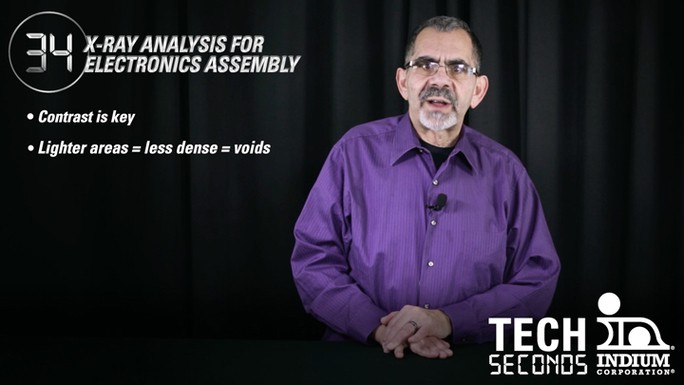Indium Corporation’s Tech Seconds video series features Phil Zarrow answering the electronics assembly industry’s most commonly asked questions... in less than 60 seconds. In this installment, Phil discusses the basics of X-ray analysis and how to identify soldering voids.
Question: Hey, Phil. I'm looking at this X-ray analysis. Could you tell me just what it means?
Phil Zarrow: Okay. Well, first of all, the key thing in X-ray is contrast. Contrast, of course, is a representation of the density of whatever we're looking at, in this case, solder joints. When we see lighter areas, that means it's less dense and those are what we're typically labeling as voids. Now, when you get involved with a double-sided assembly, the complexity level goes up quite a bit and you have to take into consideration what the contrast is telling you. Remember that the contrast threshold is controlled by the operator.
There is a learning curve involved in doing X-ray, but it's straightforward once you understand most of the concepts, and assuming you have a good quality X-ray machine. Now in regards to symptom versus defects, we want to refer to the component vendor IPC specification to determine whether or not, in terms of the volume of the actual void, it's symptomatic or has crossed over into the defect zone.


